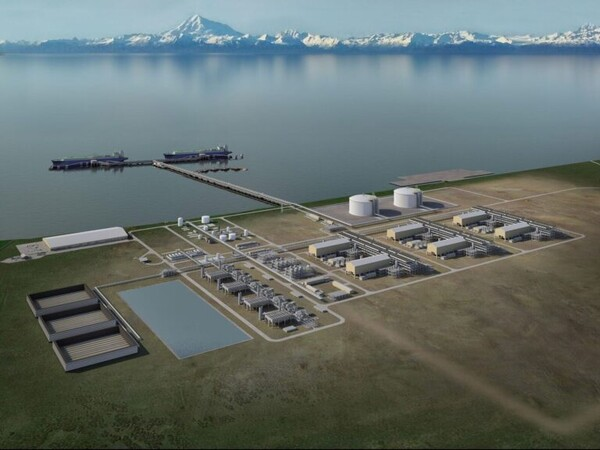U.S. Natural Gas Capacity Surges, Accelerating Global LNG Dominance
Input
Changed
Subsidy Cuts Undermine Renewables
Rising Power Demand Drives Gas Consumption
Filling Russia’s Gap to Strengthen Energy Supremacy

American power developers are scaling back solar and wind projects while pouring resources into natural gas facilities, reflecting a clear pivot in the energy market. The shift is driven by rising electricity demand, which underscores the importance of flexible and stable generation, alongside the Trump administration’s rapid rollback of subsidies and tax incentives for renewables.
A Return as a Cheaper, More Reliable Supply Source
On the 9th, industry outlet OilPrice reported that “natural gas is reemerging as the primary energy source in the U.S. power market, marking the start of a ‘gas renaissance.’” According to the report, gas-fired capacity either under construction or in pre-construction stages has reached 114 gigawatts (GW)—more than double the level a year ago. OilPrice noted that “the surge reflects the urgent need for flexible and reliable sources to offset the intermittent supply from solar and wind.”
Reuters offered a similar assessment on the 5th, citing Global Energy Monitor data showing that between January and May, 16,300 megawatts (MW) of new gas capacity broke ground, while another 98,000 MW entered pre-construction planning. The news agency attributed the slowdown in solar and wind projects to the Trump administration’s deep cuts to subsidies and tax incentives.
With gas projects expanding so rapidly, analysts expect the U.S. power sector to be structurally reorganized around natural gas. Reuters noted that “once current and planned projects are completed, natural gas will account for 44 percent of U.S. electricity generation, compared with coal at 15 percent, wind at 12 percent, and solar at 10 percent.”
Reliance on Gas Deepens During Peak Demand
The investment boom is tied to surging consumption. The U.S. Energy Information Administration (EIA), in its latest short-term outlook, projected natural gas demand this year to reach 91.4 billion cubic feet per day (bcf/d), up from 90.5 bcf/d in 2023. In January, extreme cold and heating needs pushed consumption to 126.8 bcf/d, about 5 percent higher year-on-year. The EIA concluded that “with competitive pricing and supply flexibility, natural gas remains the backbone of U.S. power generation.”
Prices, however, remain under pressure due to ample supply and high inventories. On July 25, Henry Hub prices closed at $2.677 per million British thermal units (MMBtu), down 0.70 percent from the prior session. The EIA reported that U.S. inventories last month stood at 3,199 billion cubic feet, about 6 percent above the five-year average, while average dry gas production reached 107.4 bcf/d, also higher year-on-year.
Still, the agency expects the U.S. gas market to secure medium- to long-term growth as liquefied natural gas (LNG) exports ramp up. “Multiple liquefaction plants are set to begin operations this year,” the EIA said, “which will reinforce America’s position as the world’s largest LNG exporter.” It added that Asian and European buyers, navigating geopolitical uncertainty, are likely to increasingly depend on U.S. LNG for stable supply.

Europe Turns to U.S. Gas Amid Russian Sanctions
Western sanctions on Russia, one of the world’s major gas exporters, are also boosting demand for U.S. supply. In May, the European Union (EU) formally announced plans to end all Russian gas imports by 2027. At a press conference, EU Energy Commissioner Dan Jørgensen declared: “Today we send a clear message to Russia: we will no longer tolerate energy being used as a weapon.”
Skepticism remains over the effectiveness of the sanctions, however. The EU cut Russia’s share of its gas imports from 45 percent in 2022 to 18 percent in 2024, but France increased Russian LNG imports by 81 percent over the same period, spending $2.1 billion. Hungary, meanwhile, is expected to resist deeper sanctions due to its close diplomatic ties with Moscow. Nonetheless, the prevailing view across the EU is that reducing Russian dependence is essential for energy security.
Against this backdrop, U.S. LNG has emerged as the strongest alternative. The United States already supplied 45.3 percent of the EU’s LNG imports last year, solidifying its role as Europe’s largest supplier. The EU is also weighing LNG as a bargaining chip to address trade imbalances with Washington. EU Trade Commissioner Maroš Šefčovič remarked that “LNG and soybean imports could help resolve U.S.-EU trade disputes,” highlighting the strategic interplay of energy and commerce. For the United States, this represents an opportunity to expand its energy industry while cementing a larger share of the global market.






















Comment